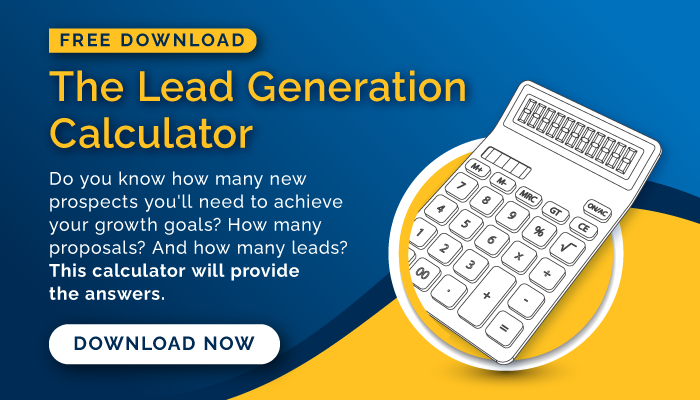 In the past, most companies relied on generic, blanketing lead generation programs. These B2B lead generation programs incorporated various traditional marketing techniques that sent out marketing messages to a diverse audience.
In the past, most companies relied on generic, blanketing lead generation programs. These B2B lead generation programs incorporated various traditional marketing techniques that sent out marketing messages to a diverse audience.
The focus was to aim the message (as best one could) to an audience that fit, with little to no knowledge about whether the companies in the audience had a pain that aligned with the message.
For the most part, these methods worked, mainly because there wasn’t anything else available. However, new technologies now allow you to customize and personalize your marketing communications for more effective B2B lead generation.
Today there is tremendous pressure on the sales side of the business, and it it critical that prospecting methods be both efficient and effective. B2B companies must capitalize on predictable, sustainable lead generation to maintain the shortest sales cycles and to maximize profit opportunities.
Fish + Pond + Bait = Buyer Focused Lead Generation
I’ve often use the analogy that sales and marketing efforts can be summed up with the simple concept of Fish + Pond + Bait. Your prospects are the fish you are attempting to catch.
In order to catch the right fish you must fish in the correct pond, which is where you will find your prospects. Finally, you must use the proper hook and bait to attract the biggest, most delicious fish.
The message and premium offers you make are your bait. When your B2B company develops lead generation efforts, you must match your buyer and have a clear understanding of WHO your customers are, WHERE you can find them, WHAT you have that they need, and WHY they need it.
Step One: Mind Your Business
To succeed, you must have a deep understanding of what you business really does. It’s not enough to talk about your products, services, features or even benefits. You must be able to connect your advantages to your customer’s problems and clearly communicate the results you create. Additionally, it will help you figure out which pond to cast your bait for the best lead generation results.
Step Two: Mind Your Clients’ Business
While you’re looking at your organization, you should pay the closest attention to your existing client base. Look carefully to identify any similarities that are universal among your current customers.
You should also make note of the areas in which your clients’ organizations differ. In examining your client base, it is also important to recognize the factors that differentiate your good clients from your bad clients. This will help you paint a clearer picture of clients you need to target more directly in your future B2B lead generation efforts.
Step Three: Identify Your BEST Prospects
Armed with the above information; you can now begin developing a fairly descriptive profile of the companies that represent your ideal customer. Your profile should include a comprehensive description of the type of client who will benefit the most from your products or services. You should not only concentrate on the factors that identify your ultimate prospects, but also those that rule them out. You can easily develop a clear picture of what your target companies look like by answering questions such as:
- What common characteristics do your BEST clients share?
- What are the shared traits of the customers you DO NOT WANT to serve?
- Why did your existing customers buy from you?
- What pain or problem are you eliminating with your products or services?
- How large is the average company you serve? (employees, annual revenue, etc.)
- How old is the average company you serve?
- What industries are your customers involved in?
- How many decision makers are typically needed when purchasing your products or services?
- What are the positions, titles and responsibilities of the decision makers?
Step Four: Cast Your Reel
Now that you have identified your fish, it is time to head to best ponds, bait your hook and cast your reel! Based on the information you have gathered you should now know where to look for your best clients and what to offer them when you find them.
Use this knowledge to create online and offline lead generation campaigns that consistently deliver the best prospects. Regardless of which method you use to contact your leads – your success hinges on your desire to help your clients and your ability to communicate these objectives.
If you are genuinely enthusiastic about the solutions you offer and develop valuable content that resonates – your lead generation campaigns will help your prospects quickly advance to the next steps in your sales cycle.

 Doug Davidoff
Doug Davidoff